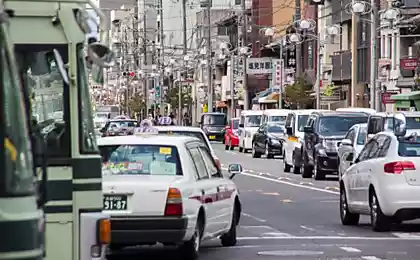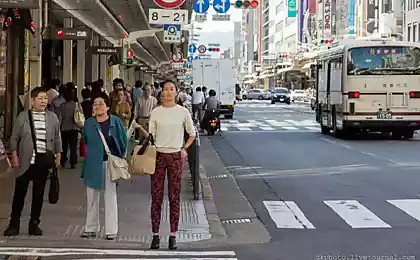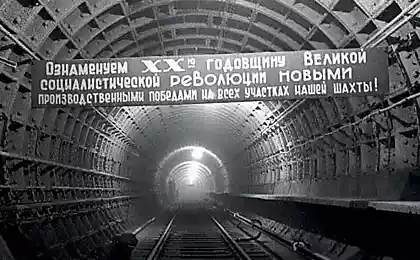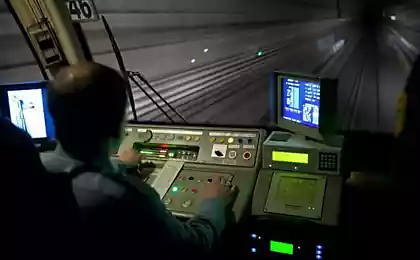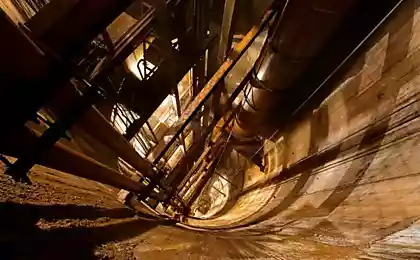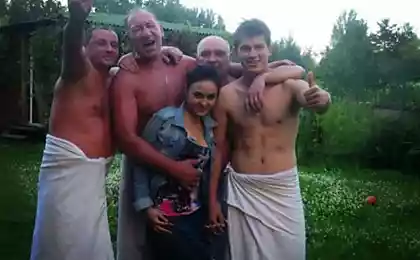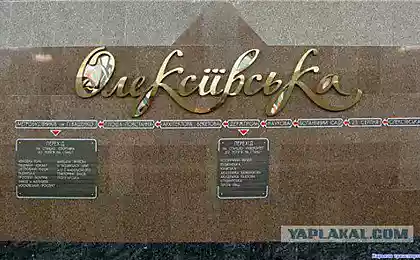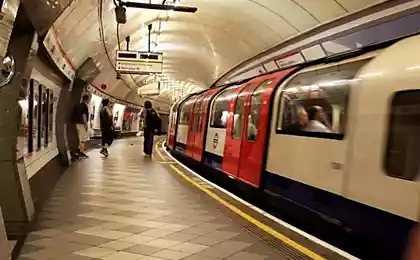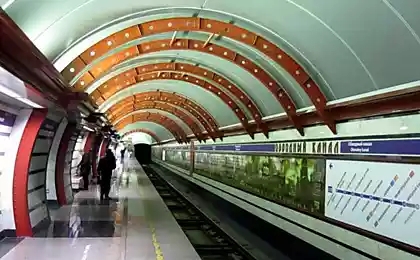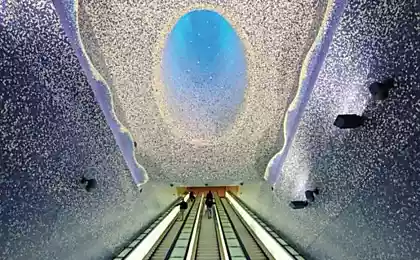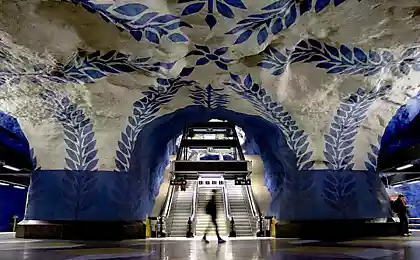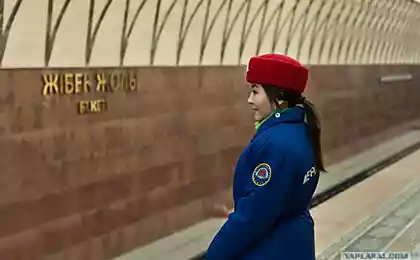1589
History of the St. Petersburg metro
Today I will try to tell about the history of the St. Petersburg Metro, its past and future. A selection of long, when over, say. The first practical steps towards the construction of the Leningrad subway were made in 1939, when the city was founded "Directorate construction HKPS-5." Later on its base it was created from the Leningrad branch instutua "Metrotrans", later transformed into an independent design organization. Ha streets were planked platforms mines. However stroitelsvo interrupted by the war. Since the beginning of the blockade of the work on the construction of the subway were discontinued.
In 1945, construction resumed. Since the mine is seriously damaged during the bombings, some of them were eliminated, and the route has undergone some changes.
The route of the first stage was divided into two sections. The first was to link the area of the Rebellion (Znamensky) with Narva Gate, and the other to continue this line to the Vyborg side to the Finland Station. The first urban underground highway was to connect a number of important areas of the city, including four Station - Moscow, Vitebsk, Baltic and Warsaw. In the future, it had to be connected and the last, the fifth Leningrad Station - Finland.
The first portion of the length of 11 km 2 connects the city center with Avtovo. Construction was carried out in difficult geological conditions. For a long time, it was thought that to build such large-scale facilities like an underground railway in the marshy soils of the delta Hevy generally can not. However, the experts made the Mining Research Institute and soil samples have given a very clear picture of the geological structure of the soil of the city. It turned out that you can build a subway, but it should be carried out at great depths - deep in the Cambrian clay (50 - 100 m).
At the first site it was required to build eight stations - "Revolt Area" (from the Moscow station), "Vladimir" (in the Vladimir area), "Pushkin" (from Vitebsk Station), "Institute of Technology" (at the beginning of Zagorodny Avenue at LTI them. Lensoveta ), "Baltic" (the Baltic Station), "Stalin" (at the Narva Gate), "Kirov" (at the Kirov plant) and, finally, "Avtovo" (at the beginning of the Peterhof highway). For station "Avtovo" in country planned to build electrodepot.
The development of the breed was conducted mainly mechanized tunneling shield - combines underground, occupying the entire diameter of the tunnel. To install the cast-iron tubing for the first time in domestic practice were applied special arrangements - erectors. Every year, the pace of construction is growing. But since, in contrast to Moscow's construction had fully maintain the closed method, and this experience at domestic Metrostroiteley was not there, the construction of the first phase spread over 10 years.
After Stalin's death, the station is almost ready, "Stalin" was renamed the "Narva". Mounted to the end of time in the underground hall huge mosaic depicting the "father of the peoples" was hastily laid slabs of beige marble, the color of the rest of the processing station.
Stations of the first section of the construction in the typical age of monumental and grandiose style. Their design has gone about 22 thousand square meters. marble and 10 thousand square meters. granite. Their covers about 700 lamps, sconces and chandeliers made of bronze, crystal, art glass.
November 6, 1955 the station Avtovo off the first train, and on November 15 began regular passenger service. Metropolitan opened.
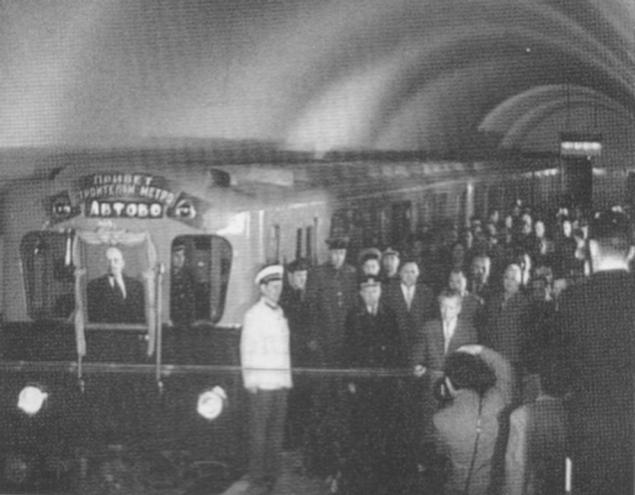
...
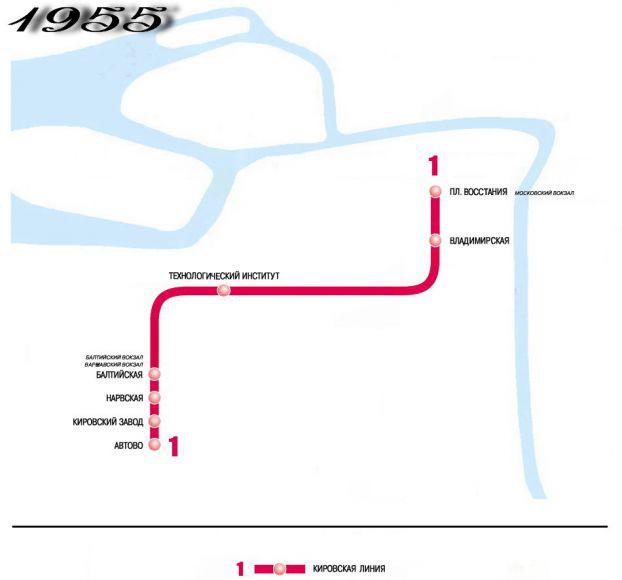
...
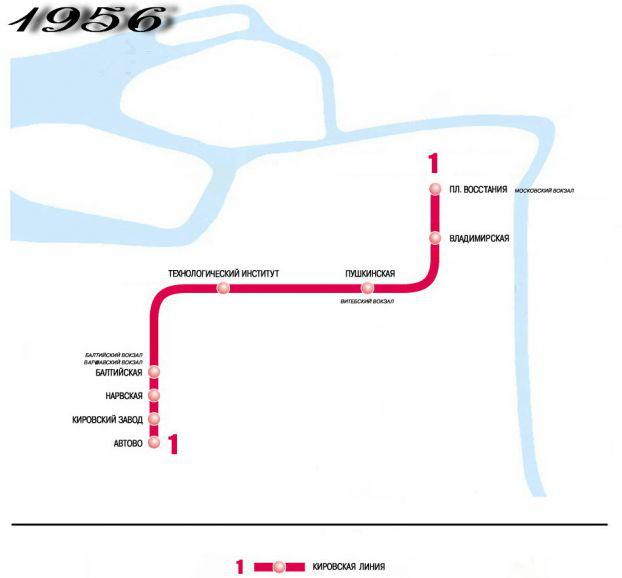
Following the commissioning of the first section of the first stage of the metro operation unfolded on the second section of the length of 3, 5 kilometers - from the area of the Rebellion to the Finland Station. Three years later - in 1958 to the previously built eight stations were added two more - "Chernyshevskaya" at the intersection of Prospect Chernyshevskogo and Furshtadskaya streets and "Lenin Square" at the Finland Station.
The new line took place at great depths under the Neva River. Construction was carried out in a more severe geological conditions. Especially difficult was the so-called "Kovenskiy erosion" - near Kovno lane. There had to remove parts of the huge boulders. Liquefaction rock and abundant groundwater forced to keep tunneling work coffered method - in hermetically sealed chambers with high blood pressure.
Nevertheless, the station had been built as planned. New stations and spans have become the most profound, not only in the city but in the country. Practice underground overcome such obstacles as the powerful water Neva domestic Tunnelling did not know. The depth of the river in the area of Foundry Bridge (where passed the line) - about 25 m, width - 300 m. The tunnels and stations are located at a depth of 70 m.

First in May 1961 it was put into operation the first section of the second stage length of 6 km with five stations, passing by the Moscow Technological Institute of the prospectus to Victory Park. In the construction of this section have been widely used new and experimental for the time methods of underground construction. So, on the new line for the first time in the country completely abandoned iron tyubingovoy finish the tunnel, which helped achieve a record in domestic practice speed - 308 meters per month of finished tunnel.
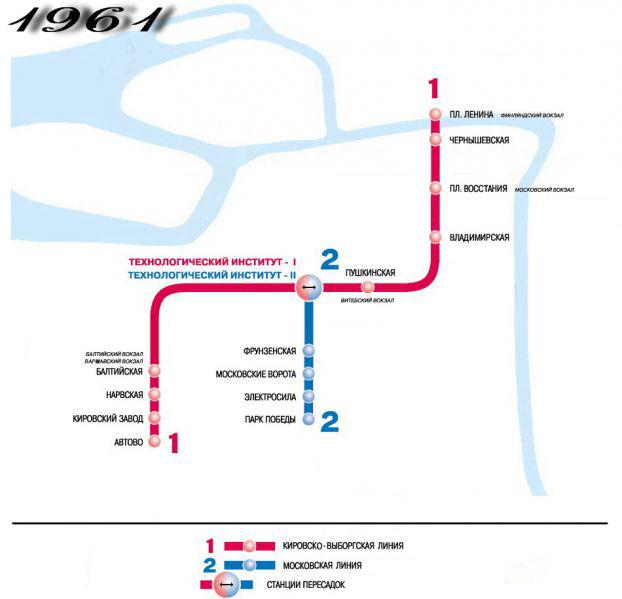
The most significant innovation has been applied in the construction of the underground hall of the station "Victory Park". It was used a completely new, highly original, although controversial functionally approach to the construction of the metro stations. The station lacks landing platforms. On either side of the central hall are two rows of sliding doors. Doors lead to the tunnels where trains stop arriving. Place train stop is chosen so that the cross-sections of the door of his cars exactly coincided with the target door station. Special unit synchronizes the time and speed of opening and closing doors and station wagons. Later, the station of this type are called "horizontal lift" for its resemblance to the lifts in which the sliding door of the cabin opened in synchronism with the shaft door, located on the site of the corresponding floor.
This device allowed the station about a quarter cheaper construction, in addition, it was believed that this type of plant operational safety, because the intervals between trains station door closed, eliminating the fall in the way of people and objects, and similar unpleasant events. When the doors are open, you can only get into the car.
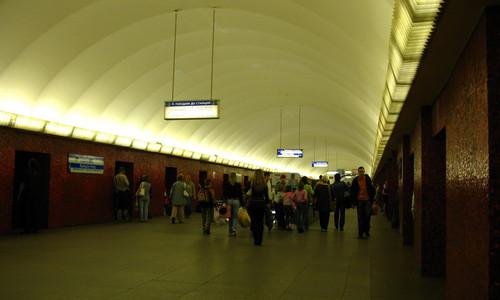
The second portion of the second line of Petersburg metro was put into operation in 1964. The plot is 7 km long with four stations was from the station "Institute of Technology" to the station "Petrograd" at the intersection of Kamennoostrovsky and Bolshoy Prospekt. The station "Petrograd" is also built on a "horizontal lift".
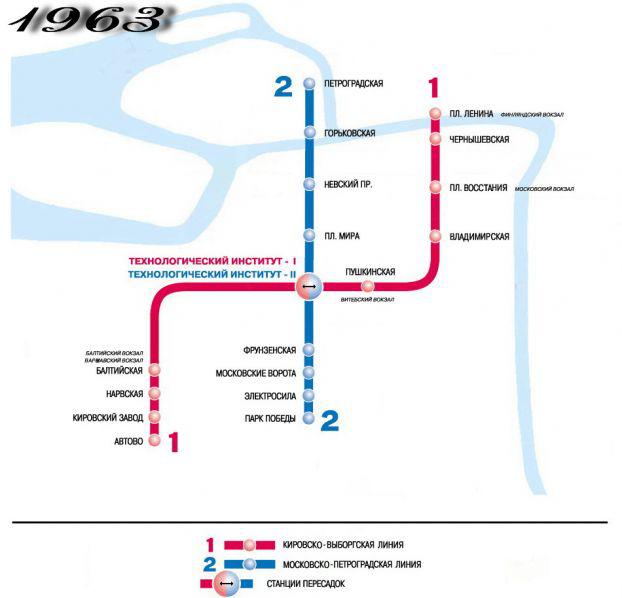
The third portion of the second stage length of only 1, 2 km from one station "Moskovskaya" second line extended south from Victory Park to the Moscow area. The site was put into operation in 1965.
In 1966 came into operation the third portion of the first stage. It was the shortest in the number of newly laid paths (400 m) and the cheapest cost of building land. It included only one station "Green Valley." And new ways and station were located on the surface, to connect them with the rest of the metro network have been used way to the surface and a portion of the park paths electrodepot "Avtovo" built by 1955. The station was very simple - to open a central platform with a canopy, rests on the light pavilion of glass and concrete, which houses the turnstiles for the passage of passengers and space station services. End of the station rests directly in the Tramway Avenue, so the traditional ways of the Congress of the station was not, and the train came to a standstill.
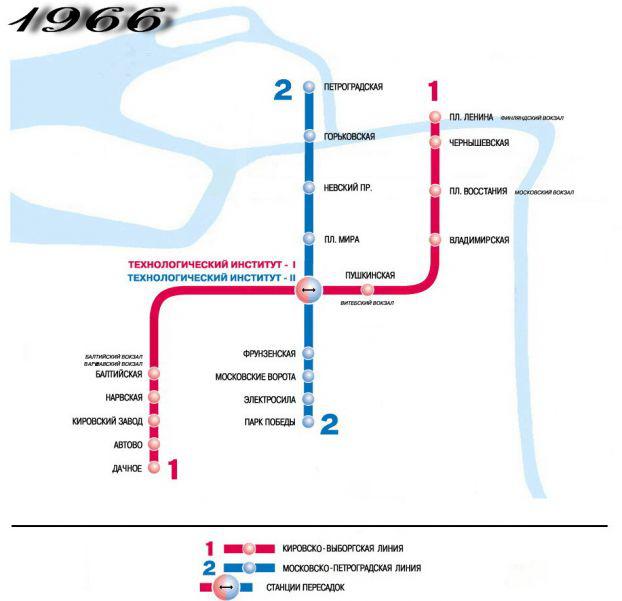
In 1967 it was opened to traffic on a third subway line - Hevsko-Vasileostrovskaya. Initially, the line had four stations, three of which ("Pl. Hevskogo Alexander", "Mayakovskaya" and "Gostiny Dvor") were located along Hevskogo prospectus, and the fourth ("Vasileostrovskaya") - Middle Avenue Vasilevsky Island. All stations of the area were built in an "horizontal lift".
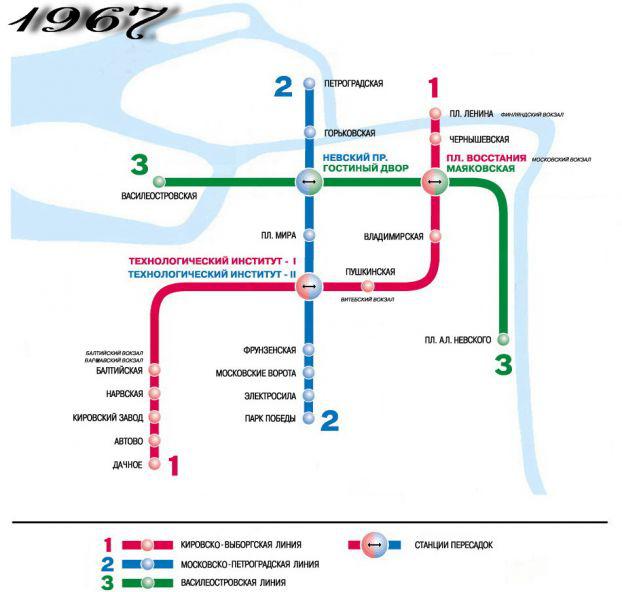
In 1971, the line was extended along the left bank Hevy south district Schemilovki where were opened two new stations - "Elizarovskaya" and "Lomonosov".
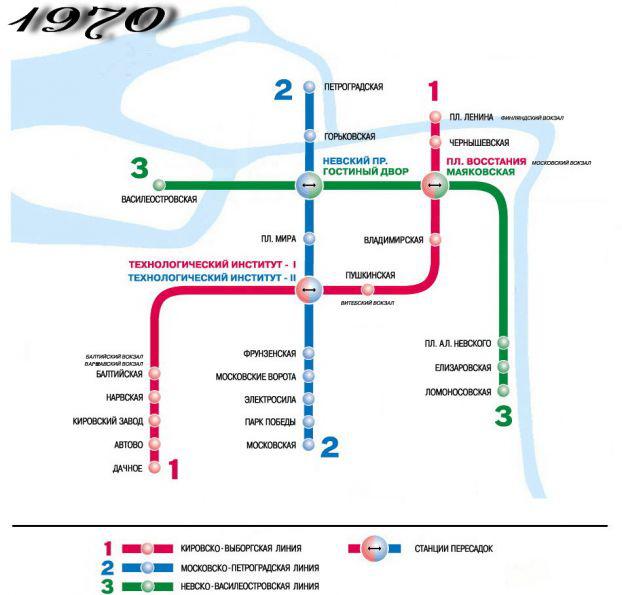
In 1972, it was put into operation two new stations on the Moscow-Petrograd line. From Central slingshot line was extended south to the new city limits in the area w / station "Kupchino", which in later years was built a huge "bedroom" area. For underground station "Kupchino" was erected new electrodepot, received the same name.
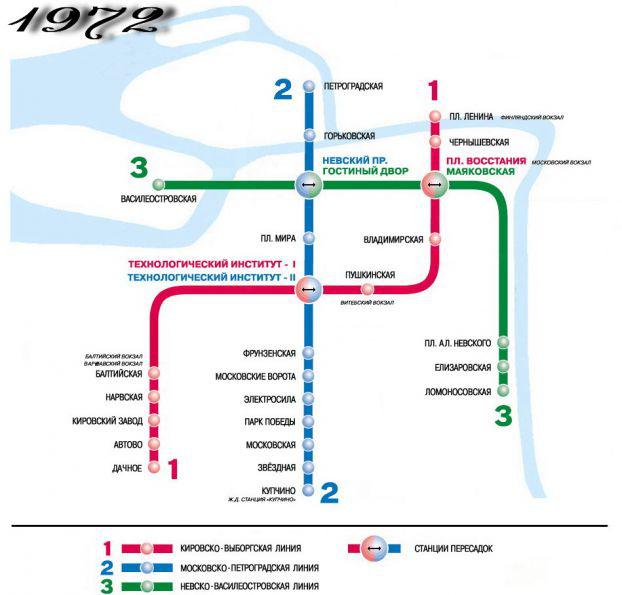
The original construction was successful. Two stations were built the first section ("Vyborg" and "Forest"), was an active construction of the remaining three. But in the spring of 1972 in the construction of tunnels between the future station "Forest" and "Area of Courage" builders are faced with severe difficulties caused by the need to carry out the underground tunnels through the channel of the river.
The very existence of an underground stream in the construction area was not a surprise. This was already known at the stage of planning the route of the new line and the construction project has been made in view of the special measures to overcome the water hazard. In the above privacy, it planned to produce freezing soil in a hazardous area during construction and to take additional measures to secure the waterproofing of tunnels.
In order to reduce the cross sectional area of the field of soil freezing, thus reducing the overall length of the refrigerant pipe and the number of freezing stations, it was decided to tunnels are not next to each other, and in two tiers - one above the other.
Initially, the construction of tunnels in the frozen soil proceeded quite successfully. But in the spring of 1972 there was a massive release of vodopeschanoy mixture into the lower tunnel. The scale of the release was that polutorakilometrovy portion of the place is almost ready to break through the station "Forest" for a few hours, was completely flooded, and the flow of water and sand in the faces could not stop.
With great difficulty, managed to evacuate the brigade drifters from the top of the tunnel. Independent communication with the surface of the slaughter had, all communications pass through rapidly floods the lower tunnel and people just do not cut off the top face, which also started the flow of water.
To save the land from flooding the rest of the line, on the crests of the acceleration and braking slides station "Forest" were hastily built two concrete gate thickness of 3 meters each. In fact, emergency tunnels were blocked by powerful concrete plugs.
As a result of stormwater into the tunnels earlier this water-filled underground cavities cleaned and formed the vast emptiness. It began subsidence on the surface. At the Polytechnic street reared asphalt, burst rail tramways. There was a threat of destruction of buildings, especially high-rise building of the Institute of Soviet Trade, standing just above the area of erosion. Fortunately while subsidence of soil surface rather quickly stopped.
In memory of the accident it was filmed "Breakthrough»
Dobavleno1 in [mergetime] 1266092779 [/ mergetime]
It was decided to continue to build on the previous track using the already flooded tunnels. And to get rid of interference from groundwater, decided to hold the soil deep freeze with liquid nitrogen. It is obvious that the implementation of such a project was possible only in a socialist economy absurd. The cost of the work in such a way was enormous, and the technical reliability of the solutions already highly doubtful. But while ideology is known to be not saved.
And from across the country to Leningrad pulled trains with tanks of liquid nitrogen (boiling temperature - minus 185). There were delivered and pumped into the ground for more than 8 million tons of liquefied natural gas. After partial freezing delivery of new portions of water and sand in place of breakthrough stopped, whereby it became possible to clean the submerged tunnels. Later on the ground "domorozili" and safely in such conditions, as it seemed, it added two ill-fated stage.
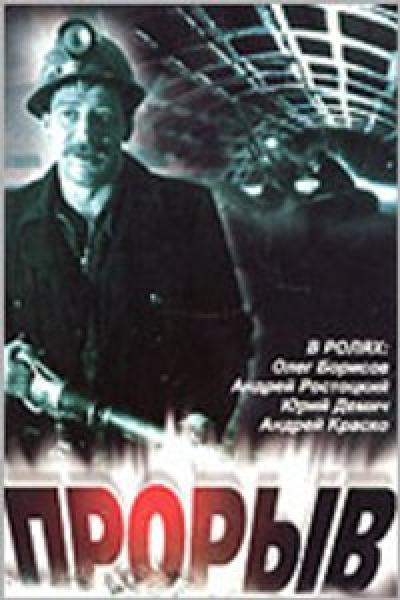
May 31, 1975 with a delay of 2, 5, it was open to traffic in the area, "Lenin Square" - "The Forest". 31 December of the same year opened the branch "Forest" - "Academic" includes blurs stage. Then it seemed that all the problems behind. The opening section of "Academic" - "Komsomolskaya" took place only in 1979.
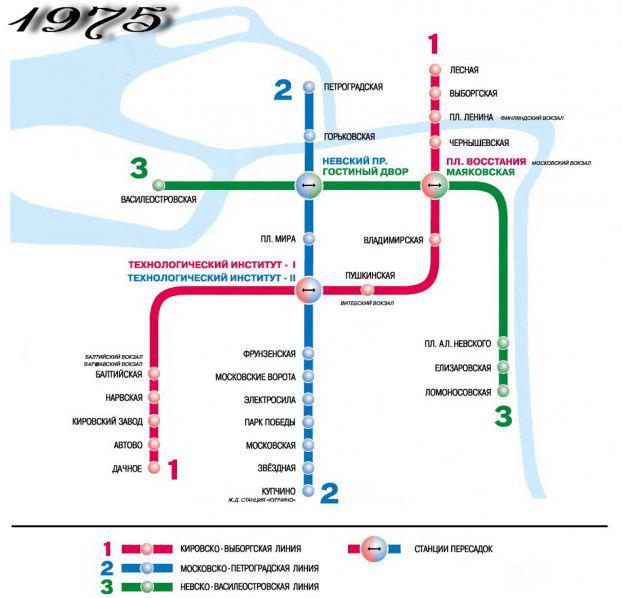
...
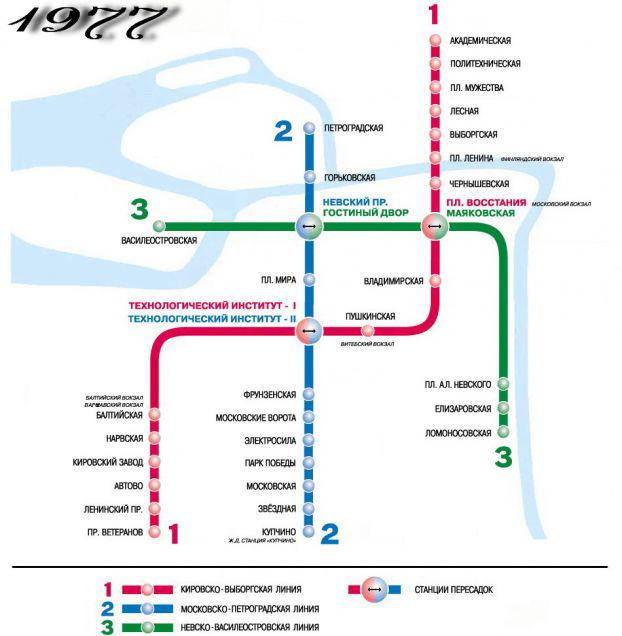
...
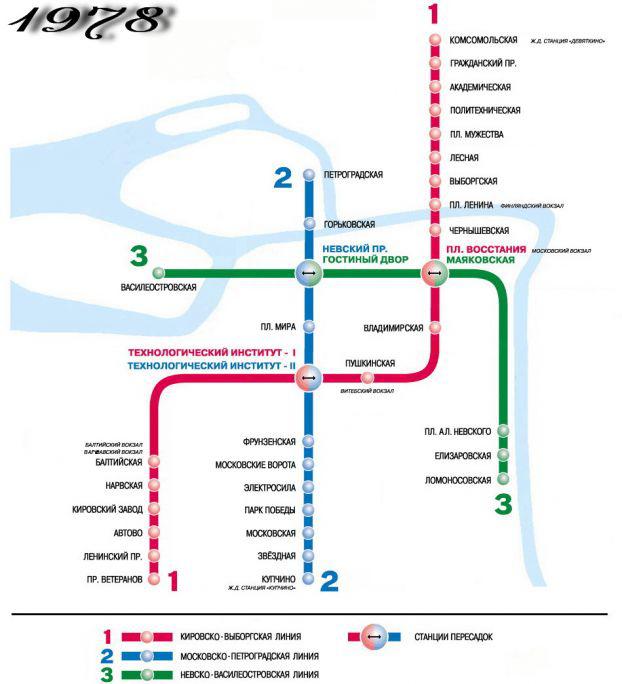
In 1979 Kirovsko-Vyborg line was extended from the station "Avtovo" to the south, in the area of Ulyanka. We opened two new stations - "Leninsky Prospekt" and "Prospect Veterans" at the same time the station was closed "Green Valley." The new site took place in a relatively favorable geological conditions LIGOVSKY heights and was built by the open way. Before that, in 1978, as already mentioned, it opened section "Academic" - "Devyatkino" (at the opening of "Komsomolskaya"). Last stantsyai located a mile outside the city limits, in the village of Murino. I must say that it is against the background of the traditional rural landscape with cottages, gardens, cows, geese and chickens metro station looked pretty funny. Now, however, this area is already heavily built up. For station "Devyatkino" was built electrodepot "North."
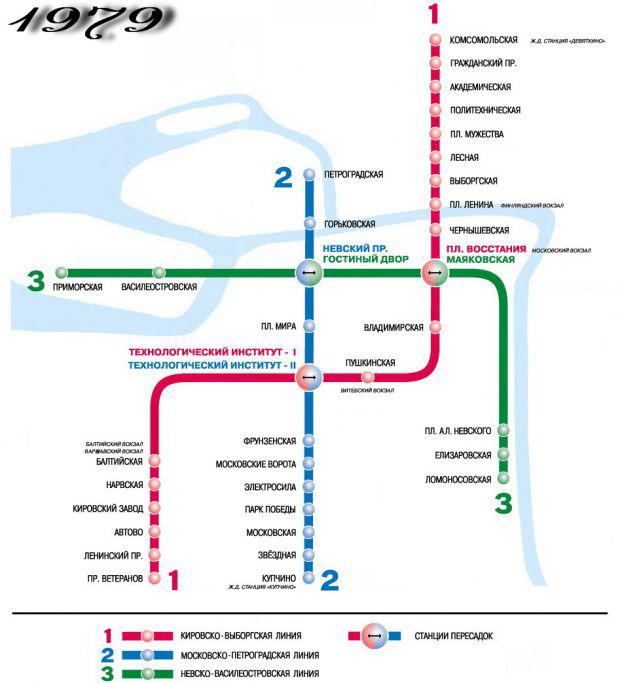
In 1980 he was put into operation a new station Neva-Vasileostrovskaya line - "Maritime". In 1981, the site was launched, "Petrograd" - "Specific" Moscow-Petrograd line. In 1983, it opened to traffic between the stations "Lomonosov" and "Obukhovo" Neva-Vasileostrovskaya line. In 1984, the same line was extended further to the southeast to the station "Pybatskoe", which was constructed for the new electrodepot "Neva".
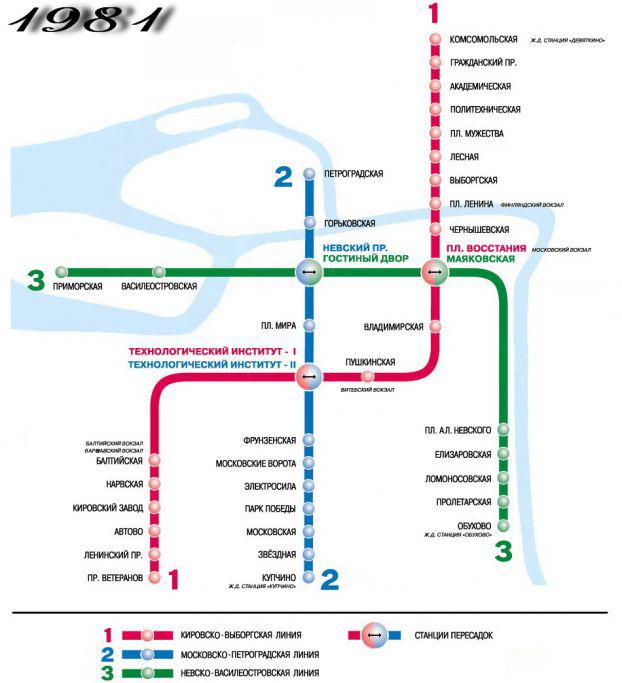
...

...

In 1985, it opened to traffic on the fourth, Right Bank line from the station "Alexander Nevsky Square" station "Prospect Bolsheviks". In 1987, the Moscow-Petrograd line was extended from the station "specific" to the station "Prospect of the Enlightenment." In 1988, on the Right Bank of the line was open station "Ulitsa Dybenko".
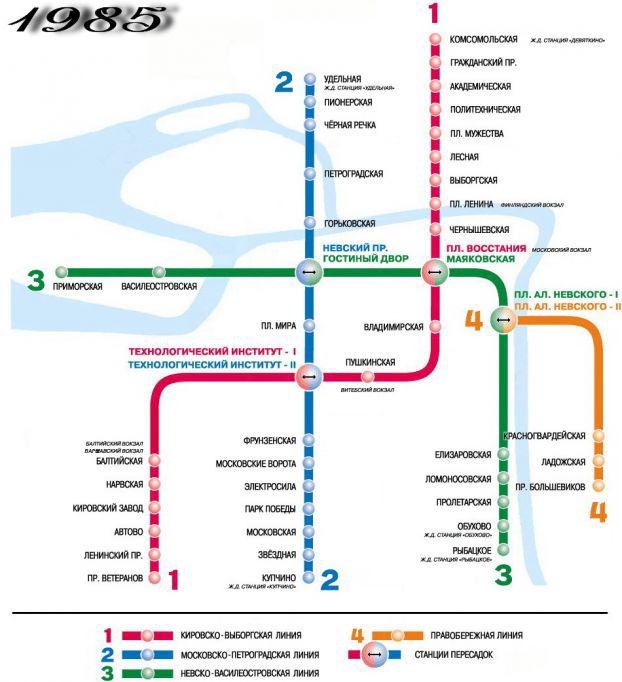
...
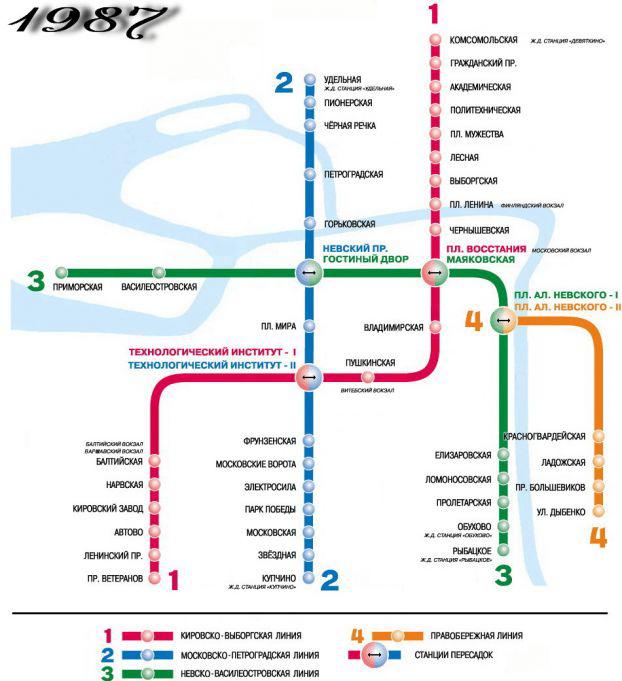
...
Dobavleno1 in [mergetime] 1266093247 [/ mergetime]
After the release of the 1990 resolution of the Council of Ministers of the USSR on the Elimination of the Main Directorate of the Ministry of Railways of subways, Metro became the property of the city and today is a unitary municipal enterprise. In the spring of 1992 the subway and officially changed its name. From the "Leningrad, the Order of Lenin, the subway named after VI Lenin, "it turned into a" Petersburg metro. " It has been changed and the logo of the subway.
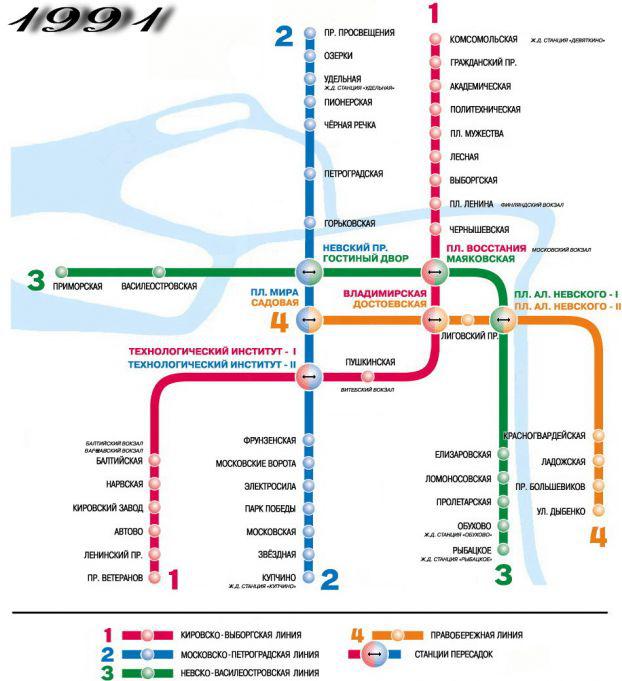
As for the construction of new plants, the economic crisis in the country could not but affect the pace of construction. December 30, 1991 opened to traffic on the Right Bank section of the line from the station "Alexander Nevsky Square" station "Sadovaya". In the future, the reduction of financing, failure to obtain even from the federal budget allocated to it funds for subway construction in St. Petersburg led to the fact that since 1991, following the start had to wait for 6 years.
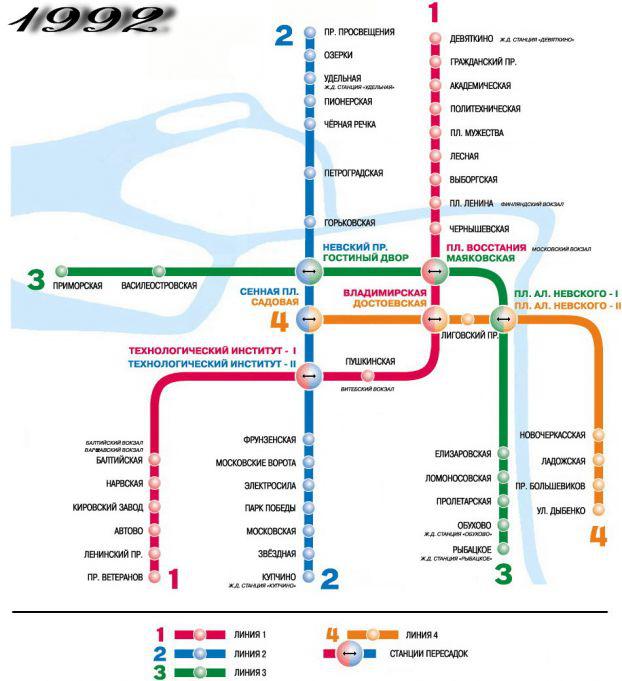
In spring 1995, once again complicate the situation on the stretch "Forest" - "Area of Courage." Sharply increased the flow of water and sand in the tunnels. Established twenty years ago waterproofing not cope. Vodopeschanaya mixture like sandpaper eat through tiny cracks in the walls and arches of tunnels. The situation was aggravated by the enormous pressure on the outer walls of the tunnels, because depth of the haul in some places more than 110 meters. In addition, harmful effects began to affect the long-standing design mistakes - the construction of tunnels in two tiers. Now to the powerful static loads (enormous pressure water and sand) has been added, and dynamic - under the influence of passing trains upper tunnel began to sink, and "fall through" to the bottom.
I must say that the sinking tunnels and flow of water in them occurred during the twenty years of operation. However, the numerical values of these factors are small and do not go beyond the technically permissible values stipulated by the project. So, sagging tunnels kept in the range of 5-25 mm per year, which is basically normal and manifests in many places many subways. Admission to the tunnels of groundwater is also the case, in general, normal. But in May 1995, the situation has changed.
For one month only tunnels slipped by 35 mm, the upper tunnel will hardly began. Water supply has increased so much that had previously been included only for the night tunnel pumps are now working around the clock have not had time to pump it.
...
Source:
In 1945, construction resumed. Since the mine is seriously damaged during the bombings, some of them were eliminated, and the route has undergone some changes.
The route of the first stage was divided into two sections. The first was to link the area of the Rebellion (Znamensky) with Narva Gate, and the other to continue this line to the Vyborg side to the Finland Station. The first urban underground highway was to connect a number of important areas of the city, including four Station - Moscow, Vitebsk, Baltic and Warsaw. In the future, it had to be connected and the last, the fifth Leningrad Station - Finland.
The first portion of the length of 11 km 2 connects the city center with Avtovo. Construction was carried out in difficult geological conditions. For a long time, it was thought that to build such large-scale facilities like an underground railway in the marshy soils of the delta Hevy generally can not. However, the experts made the Mining Research Institute and soil samples have given a very clear picture of the geological structure of the soil of the city. It turned out that you can build a subway, but it should be carried out at great depths - deep in the Cambrian clay (50 - 100 m).
At the first site it was required to build eight stations - "Revolt Area" (from the Moscow station), "Vladimir" (in the Vladimir area), "Pushkin" (from Vitebsk Station), "Institute of Technology" (at the beginning of Zagorodny Avenue at LTI them. Lensoveta ), "Baltic" (the Baltic Station), "Stalin" (at the Narva Gate), "Kirov" (at the Kirov plant) and, finally, "Avtovo" (at the beginning of the Peterhof highway). For station "Avtovo" in country planned to build electrodepot.
The development of the breed was conducted mainly mechanized tunneling shield - combines underground, occupying the entire diameter of the tunnel. To install the cast-iron tubing for the first time in domestic practice were applied special arrangements - erectors. Every year, the pace of construction is growing. But since, in contrast to Moscow's construction had fully maintain the closed method, and this experience at domestic Metrostroiteley was not there, the construction of the first phase spread over 10 years.
After Stalin's death, the station is almost ready, "Stalin" was renamed the "Narva". Mounted to the end of time in the underground hall huge mosaic depicting the "father of the peoples" was hastily laid slabs of beige marble, the color of the rest of the processing station.
Stations of the first section of the construction in the typical age of monumental and grandiose style. Their design has gone about 22 thousand square meters. marble and 10 thousand square meters. granite. Their covers about 700 lamps, sconces and chandeliers made of bronze, crystal, art glass.
November 6, 1955 the station Avtovo off the first train, and on November 15 began regular passenger service. Metropolitan opened.

...

...

Following the commissioning of the first section of the first stage of the metro operation unfolded on the second section of the length of 3, 5 kilometers - from the area of the Rebellion to the Finland Station. Three years later - in 1958 to the previously built eight stations were added two more - "Chernyshevskaya" at the intersection of Prospect Chernyshevskogo and Furshtadskaya streets and "Lenin Square" at the Finland Station.
The new line took place at great depths under the Neva River. Construction was carried out in a more severe geological conditions. Especially difficult was the so-called "Kovenskiy erosion" - near Kovno lane. There had to remove parts of the huge boulders. Liquefaction rock and abundant groundwater forced to keep tunneling work coffered method - in hermetically sealed chambers with high blood pressure.
Nevertheless, the station had been built as planned. New stations and spans have become the most profound, not only in the city but in the country. Practice underground overcome such obstacles as the powerful water Neva domestic Tunnelling did not know. The depth of the river in the area of Foundry Bridge (where passed the line) - about 25 m, width - 300 m. The tunnels and stations are located at a depth of 70 m.

First in May 1961 it was put into operation the first section of the second stage length of 6 km with five stations, passing by the Moscow Technological Institute of the prospectus to Victory Park. In the construction of this section have been widely used new and experimental for the time methods of underground construction. So, on the new line for the first time in the country completely abandoned iron tyubingovoy finish the tunnel, which helped achieve a record in domestic practice speed - 308 meters per month of finished tunnel.

The most significant innovation has been applied in the construction of the underground hall of the station "Victory Park". It was used a completely new, highly original, although controversial functionally approach to the construction of the metro stations. The station lacks landing platforms. On either side of the central hall are two rows of sliding doors. Doors lead to the tunnels where trains stop arriving. Place train stop is chosen so that the cross-sections of the door of his cars exactly coincided with the target door station. Special unit synchronizes the time and speed of opening and closing doors and station wagons. Later, the station of this type are called "horizontal lift" for its resemblance to the lifts in which the sliding door of the cabin opened in synchronism with the shaft door, located on the site of the corresponding floor.
This device allowed the station about a quarter cheaper construction, in addition, it was believed that this type of plant operational safety, because the intervals between trains station door closed, eliminating the fall in the way of people and objects, and similar unpleasant events. When the doors are open, you can only get into the car.

The second portion of the second line of Petersburg metro was put into operation in 1964. The plot is 7 km long with four stations was from the station "Institute of Technology" to the station "Petrograd" at the intersection of Kamennoostrovsky and Bolshoy Prospekt. The station "Petrograd" is also built on a "horizontal lift".

The third portion of the second stage length of only 1, 2 km from one station "Moskovskaya" second line extended south from Victory Park to the Moscow area. The site was put into operation in 1965.
In 1966 came into operation the third portion of the first stage. It was the shortest in the number of newly laid paths (400 m) and the cheapest cost of building land. It included only one station "Green Valley." And new ways and station were located on the surface, to connect them with the rest of the metro network have been used way to the surface and a portion of the park paths electrodepot "Avtovo" built by 1955. The station was very simple - to open a central platform with a canopy, rests on the light pavilion of glass and concrete, which houses the turnstiles for the passage of passengers and space station services. End of the station rests directly in the Tramway Avenue, so the traditional ways of the Congress of the station was not, and the train came to a standstill.

In 1967 it was opened to traffic on a third subway line - Hevsko-Vasileostrovskaya. Initially, the line had four stations, three of which ("Pl. Hevskogo Alexander", "Mayakovskaya" and "Gostiny Dvor") were located along Hevskogo prospectus, and the fourth ("Vasileostrovskaya") - Middle Avenue Vasilevsky Island. All stations of the area were built in an "horizontal lift".

In 1971, the line was extended along the left bank Hevy south district Schemilovki where were opened two new stations - "Elizarovskaya" and "Lomonosov".

In 1972, it was put into operation two new stations on the Moscow-Petrograd line. From Central slingshot line was extended south to the new city limits in the area w / station "Kupchino", which in later years was built a huge "bedroom" area. For underground station "Kupchino" was erected new electrodepot, received the same name.

The original construction was successful. Two stations were built the first section ("Vyborg" and "Forest"), was an active construction of the remaining three. But in the spring of 1972 in the construction of tunnels between the future station "Forest" and "Area of Courage" builders are faced with severe difficulties caused by the need to carry out the underground tunnels through the channel of the river.
The very existence of an underground stream in the construction area was not a surprise. This was already known at the stage of planning the route of the new line and the construction project has been made in view of the special measures to overcome the water hazard. In the above privacy, it planned to produce freezing soil in a hazardous area during construction and to take additional measures to secure the waterproofing of tunnels.
In order to reduce the cross sectional area of the field of soil freezing, thus reducing the overall length of the refrigerant pipe and the number of freezing stations, it was decided to tunnels are not next to each other, and in two tiers - one above the other.
Initially, the construction of tunnels in the frozen soil proceeded quite successfully. But in the spring of 1972 there was a massive release of vodopeschanoy mixture into the lower tunnel. The scale of the release was that polutorakilometrovy portion of the place is almost ready to break through the station "Forest" for a few hours, was completely flooded, and the flow of water and sand in the faces could not stop.
With great difficulty, managed to evacuate the brigade drifters from the top of the tunnel. Independent communication with the surface of the slaughter had, all communications pass through rapidly floods the lower tunnel and people just do not cut off the top face, which also started the flow of water.
To save the land from flooding the rest of the line, on the crests of the acceleration and braking slides station "Forest" were hastily built two concrete gate thickness of 3 meters each. In fact, emergency tunnels were blocked by powerful concrete plugs.
As a result of stormwater into the tunnels earlier this water-filled underground cavities cleaned and formed the vast emptiness. It began subsidence on the surface. At the Polytechnic street reared asphalt, burst rail tramways. There was a threat of destruction of buildings, especially high-rise building of the Institute of Soviet Trade, standing just above the area of erosion. Fortunately while subsidence of soil surface rather quickly stopped.
In memory of the accident it was filmed "Breakthrough»
Dobavleno1 in [mergetime] 1266092779 [/ mergetime]
It was decided to continue to build on the previous track using the already flooded tunnels. And to get rid of interference from groundwater, decided to hold the soil deep freeze with liquid nitrogen. It is obvious that the implementation of such a project was possible only in a socialist economy absurd. The cost of the work in such a way was enormous, and the technical reliability of the solutions already highly doubtful. But while ideology is known to be not saved.
And from across the country to Leningrad pulled trains with tanks of liquid nitrogen (boiling temperature - minus 185). There were delivered and pumped into the ground for more than 8 million tons of liquefied natural gas. After partial freezing delivery of new portions of water and sand in place of breakthrough stopped, whereby it became possible to clean the submerged tunnels. Later on the ground "domorozili" and safely in such conditions, as it seemed, it added two ill-fated stage.

May 31, 1975 with a delay of 2, 5, it was open to traffic in the area, "Lenin Square" - "The Forest". 31 December of the same year opened the branch "Forest" - "Academic" includes blurs stage. Then it seemed that all the problems behind. The opening section of "Academic" - "Komsomolskaya" took place only in 1979.

...

...

In 1979 Kirovsko-Vyborg line was extended from the station "Avtovo" to the south, in the area of Ulyanka. We opened two new stations - "Leninsky Prospekt" and "Prospect Veterans" at the same time the station was closed "Green Valley." The new site took place in a relatively favorable geological conditions LIGOVSKY heights and was built by the open way. Before that, in 1978, as already mentioned, it opened section "Academic" - "Devyatkino" (at the opening of "Komsomolskaya"). Last stantsyai located a mile outside the city limits, in the village of Murino. I must say that it is against the background of the traditional rural landscape with cottages, gardens, cows, geese and chickens metro station looked pretty funny. Now, however, this area is already heavily built up. For station "Devyatkino" was built electrodepot "North."

In 1980 he was put into operation a new station Neva-Vasileostrovskaya line - "Maritime". In 1981, the site was launched, "Petrograd" - "Specific" Moscow-Petrograd line. In 1983, it opened to traffic between the stations "Lomonosov" and "Obukhovo" Neva-Vasileostrovskaya line. In 1984, the same line was extended further to the southeast to the station "Pybatskoe", which was constructed for the new electrodepot "Neva".

...

...

In 1985, it opened to traffic on the fourth, Right Bank line from the station "Alexander Nevsky Square" station "Prospect Bolsheviks". In 1987, the Moscow-Petrograd line was extended from the station "specific" to the station "Prospect of the Enlightenment." In 1988, on the Right Bank of the line was open station "Ulitsa Dybenko".

...

...
Dobavleno1 in [mergetime] 1266093247 [/ mergetime]
After the release of the 1990 resolution of the Council of Ministers of the USSR on the Elimination of the Main Directorate of the Ministry of Railways of subways, Metro became the property of the city and today is a unitary municipal enterprise. In the spring of 1992 the subway and officially changed its name. From the "Leningrad, the Order of Lenin, the subway named after VI Lenin, "it turned into a" Petersburg metro. " It has been changed and the logo of the subway.

As for the construction of new plants, the economic crisis in the country could not but affect the pace of construction. December 30, 1991 opened to traffic on the Right Bank section of the line from the station "Alexander Nevsky Square" station "Sadovaya". In the future, the reduction of financing, failure to obtain even from the federal budget allocated to it funds for subway construction in St. Petersburg led to the fact that since 1991, following the start had to wait for 6 years.

In spring 1995, once again complicate the situation on the stretch "Forest" - "Area of Courage." Sharply increased the flow of water and sand in the tunnels. Established twenty years ago waterproofing not cope. Vodopeschanaya mixture like sandpaper eat through tiny cracks in the walls and arches of tunnels. The situation was aggravated by the enormous pressure on the outer walls of the tunnels, because depth of the haul in some places more than 110 meters. In addition, harmful effects began to affect the long-standing design mistakes - the construction of tunnels in two tiers. Now to the powerful static loads (enormous pressure water and sand) has been added, and dynamic - under the influence of passing trains upper tunnel began to sink, and "fall through" to the bottom.
I must say that the sinking tunnels and flow of water in them occurred during the twenty years of operation. However, the numerical values of these factors are small and do not go beyond the technically permissible values stipulated by the project. So, sagging tunnels kept in the range of 5-25 mm per year, which is basically normal and manifests in many places many subways. Admission to the tunnels of groundwater is also the case, in general, normal. But in May 1995, the situation has changed.
For one month only tunnels slipped by 35 mm, the upper tunnel will hardly began. Water supply has increased so much that had previously been included only for the night tunnel pumps are now working around the clock have not had time to pump it.
...
Source:




